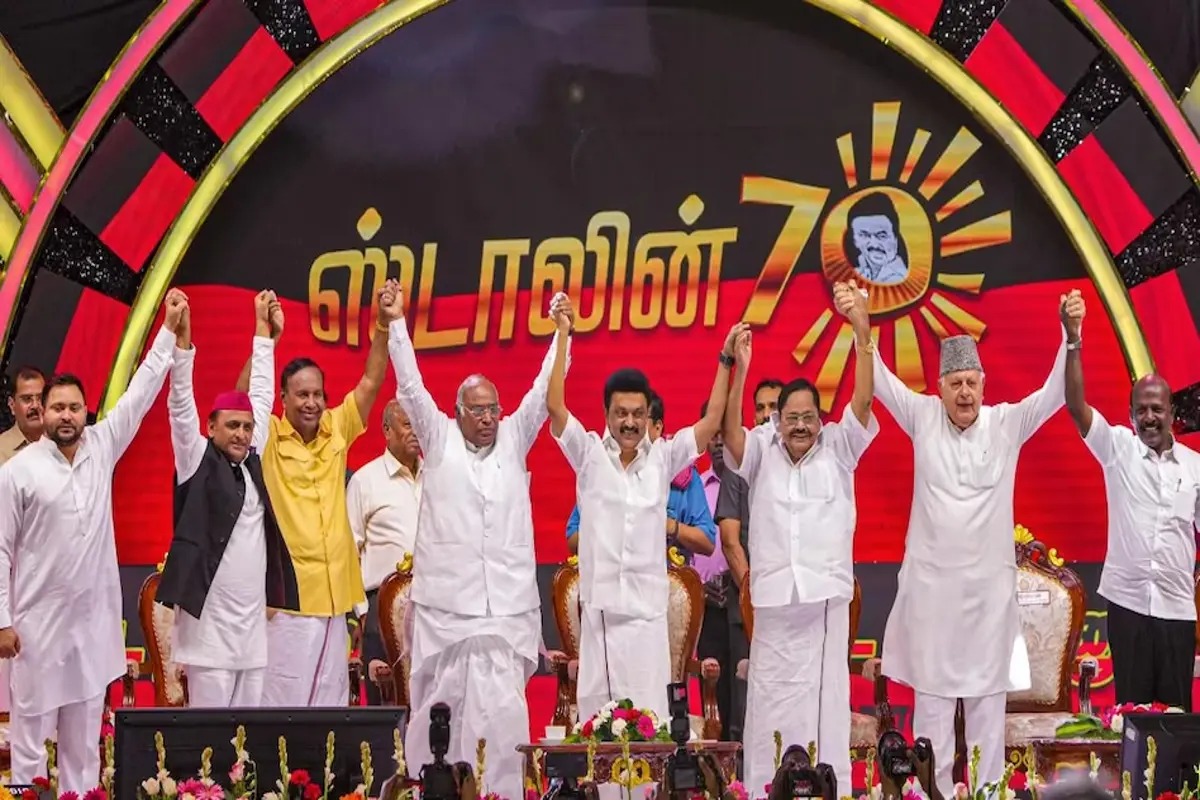
Opposition parties
Although the fight for Delhi may be a year away, the bugle of “war” has already sounded on the political battleground. The parties are eager to leave their barracks, and verbal missiles and sorties of allegations are already flying. Alliances are being reshaped, and the strategies of both camps seem to be poles apart.
To put it succinctly, the leadership question is settled in the ruling camp. Nobody is even remotely in a position to challenge Narendra Modi. Meanwhile, the opposition is still grappling with settling the issue. There are many claimants to the post, but none of them wants to wear the thorned crown openly. A consensus leader still eludes the anti-BJP forces.
Bihar Chief Minister Nitish Kumar has sent feelers for Delhi’s throne in the past, with the latest one coming during an Iftar party this Ramadan. The stage of the party hosted in Patna had a larger-than-life digital image of the Red Fort. The JD(U) supremo is known for using political symbolism as a craft, so it was natural for political commentators to jump in. The BJP has termed it as yet another expression of Kumar’s ambitions for the country’s top job. The saffron party has accused him of betraying the alliance for the same reason in the past.
Addressing a rally in the state last week, Union Home Minister Amit Shah claimed Bihar Chief Minister’s dream will never be realized, as people have already decided to give PM Modi a third term. A virtual Red Fort at an Iftar party function is being seen as Kumar’s answer to Shah’s “no vacancy for the PM post” jibe.
The opposition has to decide the question of its own leadership first. Nitish Kumar may have several factors on his side, but the weak presence of his party in Parliament weakens his claim. DMK and TMC clearly score over him in this regard. Then we have Arvind Kejriwal with two state governments under him. Telangana CM K Chandrashekhar Rao has also thrown his hat in the ring, and his party has just gone “national” from “local.”
Coming to the elephant in the room, the grand old Congress party, which should have been the most obvious choice for the pole position in the opposition camp. However, the most obvious may not always be the most relevant in politics. Party Chief Mallikarjun Kharge’s recent claim during the Nagaland polls that Congress will lead the opposition in 2024 hasn’t impressed other players like Mamata Banerjee, KCR, Kejriwal, or Akhilesh Yadav. Many of these challengers have Congress as a serious opponent in their respective states. For example, TMC just recently lost an Assembly by-election at the hands of Congress. What has irked Mamata more is the fact that the Congress had no qualms in allying with the Left parties to ensure her defeat.
Kejriwal has never really endorsed the idea of a united opposition, claiming always that he is only allied to the public. He was the one to float the idea of a G-8 meeting of the non-Congress and non-BJP Chief Ministers. Congress remains a chief obstacle to his plans for AAP’s expansion in the north. Likewise, KCR believes Congress has an understanding with the BJP to dislodge his government from Telangana. Akhilesh Yadav, on the other hand, has hinted at departing from his party’s tradition of not fielding candidates in Amethi and Raebareli Lok Sabha seats.
Although Congress is no longer a player in UP, its fortunes could change if it enters into an alliance. The problem is that while leaders like Nitish Kumar and Sharad Pawar understand this reality, other regional leaders consider Congress a liability. Perhaps that’s why in February when Nitish appealed to Congress to lead the opposition openly from the stage at the CPI-ML convention, senior Congress leader Salman Khurshid had to ask who would say “I love you” first.
There is a practical aspect to consider when it comes to the importance of a national party in an alliance. While regional leaders may be strong in their own state, their power often remains limited until the assembly elections. During Lok Sabha elections, voters from states vote strategically and follow the direction of national parties. In past alliances, regional parties considered these practical ideas as guiding principles but have seemingly forgotten them in the present era. This may be a significant reason for confusion regarding the role of Congress in any kind of alliance.
If the opposition can unite against the BJP, the election could be interesting. In the 2019 Lok Sabha elections, the BJP received 38% of the votes while 14 main opposition parties got 39% of the votes. However, despite having a higher percentage of votes, the opposition could only win 160 seats, while the BJP won over 300.
No political party can afford to ignore its interests and form an alliance without any moral or intellectual reason behind it. Such alliances become irrelevant after some time. Jayaprakash Narayan and Lohia ji had done this in the 70s. JP not only made Congress opposition the basis of a formidable anti-Congress alliance but also presented the ideological concept of “Sampoorna Kranti” or complete revolution against the emergency. Does the current opposition have any such idea?
Many opponents of the BJP claim that the Narendra Modi government is behaving like Indira Gandhi’s emergency rule, government agencies like CBI and ED are being misused, and almost every opposition leader is being targeted. In such a situation, the ground for a Janata Party-like experiment looks fertile. But can an opposition plagued by groupism sow seeds of change? Even if the opposition manages to sow seeds, will the public be ready to bless it?
The answer to these questions will only be revealed when the opposition presents its unity as evidence in front of the country’s public. For now, it remains an unsolved puzzle for everyone.


















